Goats have been reared around the world for centuries. In New Zealand, feral goats live in scrub areas. Goats are also raised for their milk, meat, and fiber. In New Zealand, goats are raised for milk, meat, and fiber production and also act as a way to control excess grass growth, increase branching in mixed pastures, and control weeds. Let’s check out more information on Goat farming in New Zealand.
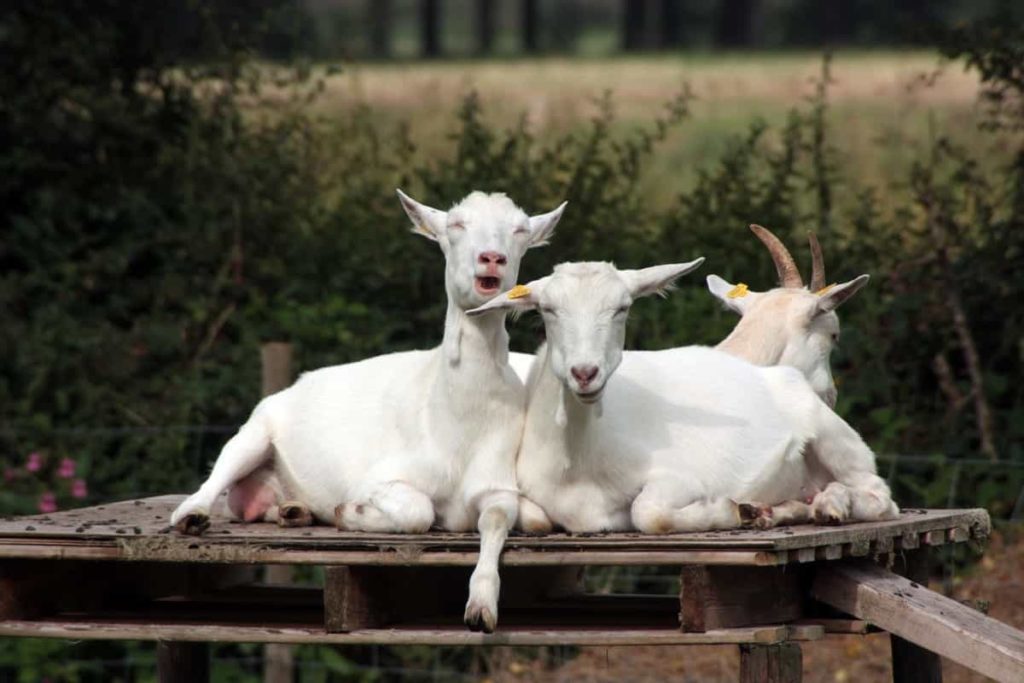
Dairy goat farming is a growing industry, with most farms located in the Waikato area. Angora goats are bred all over the country for Mohair. However, the industry is relatively small. Globally, New Zealand has the best genetics for meat goats. However, the number of goats reared for meat production is relatively small, and the majority of exported goat meat comes from feral goats.
Goat industry in New Zealand
The New Zealand (NZ) dairy goat industry is merely a shock to the quantity of milk produced in the international market. However, the NZ Dairy Goat industry has become more prominent in the international market over the last five years and is currently the most developed NZ goat industry compared to the meat and fiber goat industries. The current local market is small and consists mainly of cheese, yogurt, UHT, whole milk, milk powder, and ice cream sold at local farmers’ markets and supermarkets.
With New Zealand’s changing palate, domestic markets could grow in the future. About 85,000 dairy goats are supplied by one large and three small companies producing milk powder, cheese, and liquid milk. The most valuable commodity produced and widely exported is milk powder. An average NZ commercial dairy goat produces approximately 826 kg of milk, with the top farms producing 1,440 kg per goat producing 11.5% to 13.5% solids (fat, protein, and lactose) in 280 to 305 days.
Commercial herd sizes range from 200 to about 2,500 dairy farmers. The average size of a herd of small family farms will be between 20 and 70 milkers on average. NZ dairy goat farmers use a variety of farming systems ranging from 100% grazing system to 100% housing and total mixed ratio (TMR). The type of system depends on the number of goats per hectare, the type of environment (including weather, soil type, and topography), economics, and personal preferences.
In case you miss this: How this Farmer Made 5 Lakh Profit From His Goat Farm – A Success Story
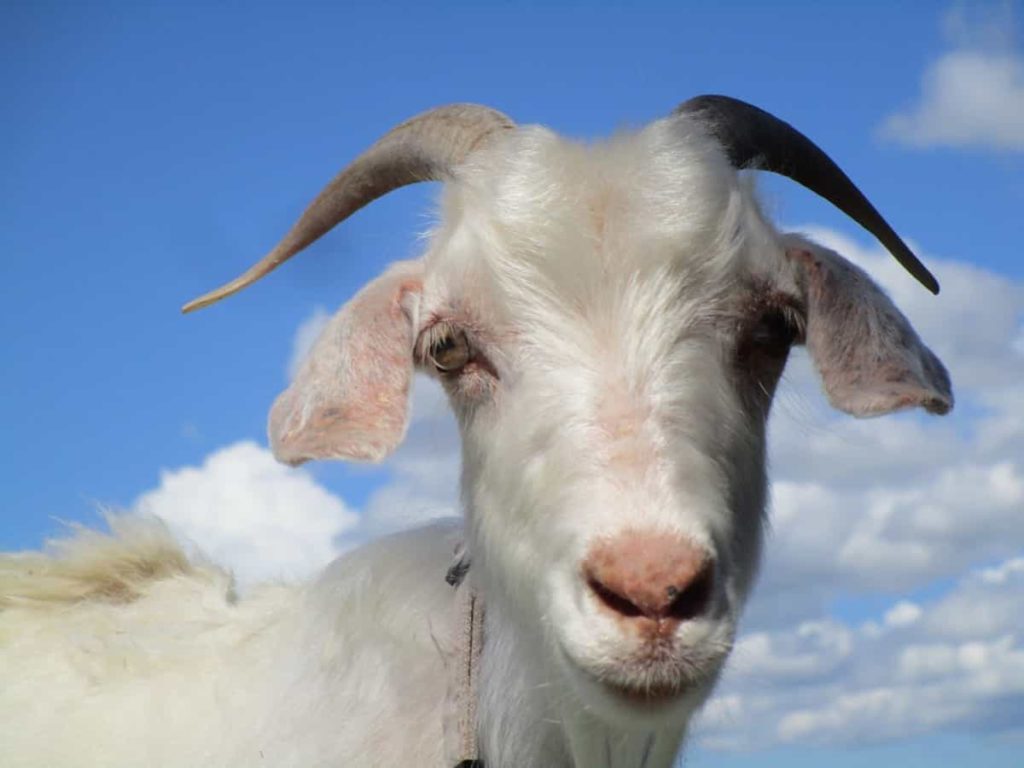
Goats have been used for milk production for at least 9,000 years, but dairy goats have a relatively recent introduction in New Zealand. Milk was sometimes used on ships that brought immigrants to New Zealand to supply dairy products along the way. Dairy goat milk processors are trying to increase the number of their suppliers, helping to increase farmers’ interest in New Zealand’s growing goat milk industry. In New Zealand, goats are kept for milk as well as their meat and fiber.
Fibers obtained from goats include Mohair (from angora goats) and Cashmere. Shearing sheds are fast-paced environments, where goats can be handled roughly and cut with a cutting handpiece. For emotionally and sensitive intelligent animals, such as goats, shearing can be a traumatic experience. The goat industry in New Zealand is small and the prospects for its expansion are limited.
Environmental and commodity market barriers that are currently affecting New Zealand’s pastoral system provide an opportunity for the goat industry to contribute more economically to New Zealand’s agricultural production. In New Zealand, goats are reared for milk, meat, and fiber production and it also serves as a mechanism for controlling the overgrowth of pastures, trimming in mixed pastures, and controlling weeds.
Goat utilization in New Zealand
Four major productive goat characteristics are used in the commercial and semi-commercial sectors in New Zealand. They are used by goats for meat, fur, milk, and mohair (limited to Angora goats). In addition to these direct products, goats can also be used to control weeds. There are currently three distinctly identifiable production systems in New Zealand, including goats. They are as follows;
- Weed control and meat and skin production
- Milk production
- Mohair production
In case you miss this: Common Mistakes in Goat Farming: For First Time Goat Owners
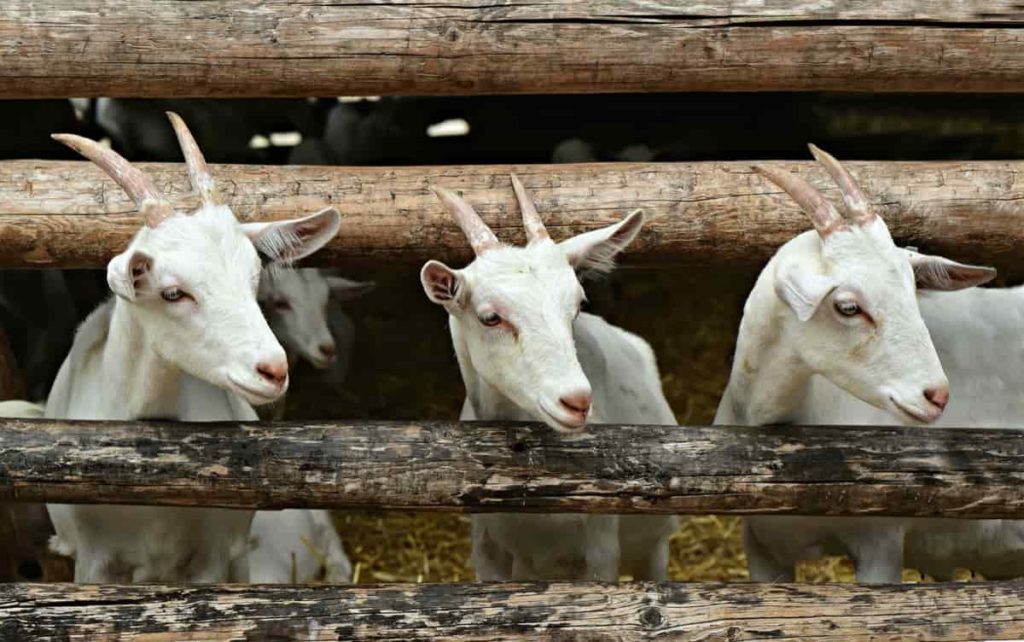
Milk
Goat’s milk is nutritious and easy for people to digest. It has a strong flavor and is good for making cheese. Goats can be milked by hand or by machine. Most goat’s milk in New Zealand is of the Saanen breed.
Fiber from goats
Angora goats have long ringlets. This soft fiber is used for fabrics and furnishings. Many breeds of goats also provide Cashmere – very soft undercoat hair that can be separated from the goat’s hair and used to make clothes.
Meat
Goat meat is popular all over the world. Boer and Kiko goats are the main breeds for meat production in New Zealand.
Goat breeds in New Zealand
The majority of dairy goats in New Zealand (probably about 80%) are Saanen, a breed that originated in Switzerland. They are medium to large; the coat is white or cream and their ears are erect. Saanen originated in Switzerland. They are medium to large, attractive dairy type, smart, and revealing vigor. The color of the coat is white or cream. The ears should be straight and alert, preferably pointing forward. Saanen is the predominant breed in New Zealand.
Toggenburg
Toggenburg is medium-sized, brown in color, ranging from light brown to dark chocolate. Toggenburg comes from the Toggenburg Valley in Switzerland. This breed is medium-sized, strong, strong, and smart in appearance. The color is brown, varying from light vanity to dark chocolate. The clear white Swiss markings are stripes of the face from the top of the eye to the mouth, to the edges of the ears and the ends, the legs from the knees to the hooves and from the inside of the legs to the trunk, on the bark and around the tail.
In case you miss this: Goat Farming Insurance in India, Companies, Policies, and Premiums
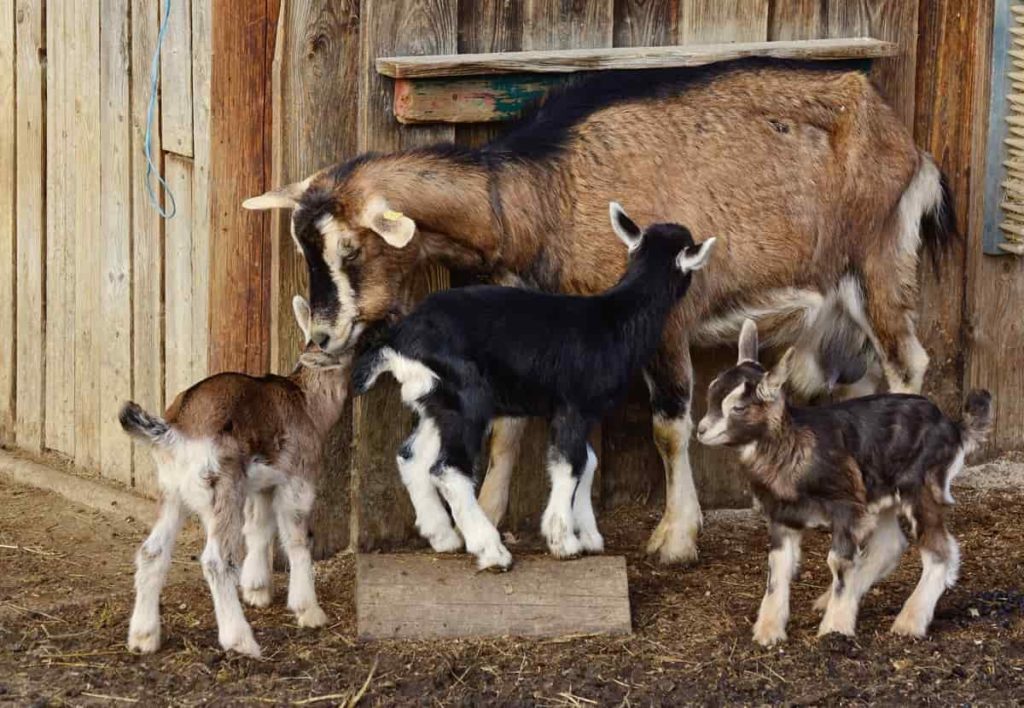
Anglo-Nubian
Anglo-Nubian is of Eastern origin. They are balanced with alertness, sound, and high proud head carriage. They are medium to large, with nasal bones (roman nose) and long drooping ears below the head, wide and open. A coat is any color or combination of colors.
British Alpine
The British Alpine is a type of Swiss. They display a large, attractive, smooth-bodied, attractive dairy variety. The color is black with white Swiss markings like Toggenburg.
Sable
Sable originated in New Zealand around 1985. It can be any color but it should not be more than 50% white. Sable was developed from the Herd Register Saanens, which contains the color gene. Sable’s milking ability is similar to that of Saanen.
Nigerian dwarf
The Nigerian dwarf has recently been introduced in New Zealand. The Nigerian dwarf is a smaller version of the dairy breed made from dwarf goats bred in the United States and West Africa. A coat is any color or combination of colors, the ears stand out and the face is firm. Eyes can be of any color.
Arapawa
According to the American Livestock Breeds Conservancy, the New Zealand Arapawa Goat is one of the rarest breeds in the world, close to extinction. A small, dual-purpose animal was found isolated on the island of Arapawa in New Zealand’s Marlborough Sounds.
Feeding
Goats need good feed, especially if they are pregnant or lactating or both. Dairy cows are lean, like dairy cows, but they should not be allowed to be too thin. It is rare to see fat milk goats but milking goats that are very thin are very common. They like a wide variety of plants and are good at eating young thistles and grasses (and expensive plants and trees too) in pastures, but they will not eat food that is not clean and fresh.
Dairy goats need good quality pasture and have plenty of it all year round. In winter, goats need extra food, especially if they are producing milk, and that means grass, silage, or concentrate.
In case you miss this: Dairy Disease Symptoms and Treatment for Cows, Cattle, Goats, and Sheep
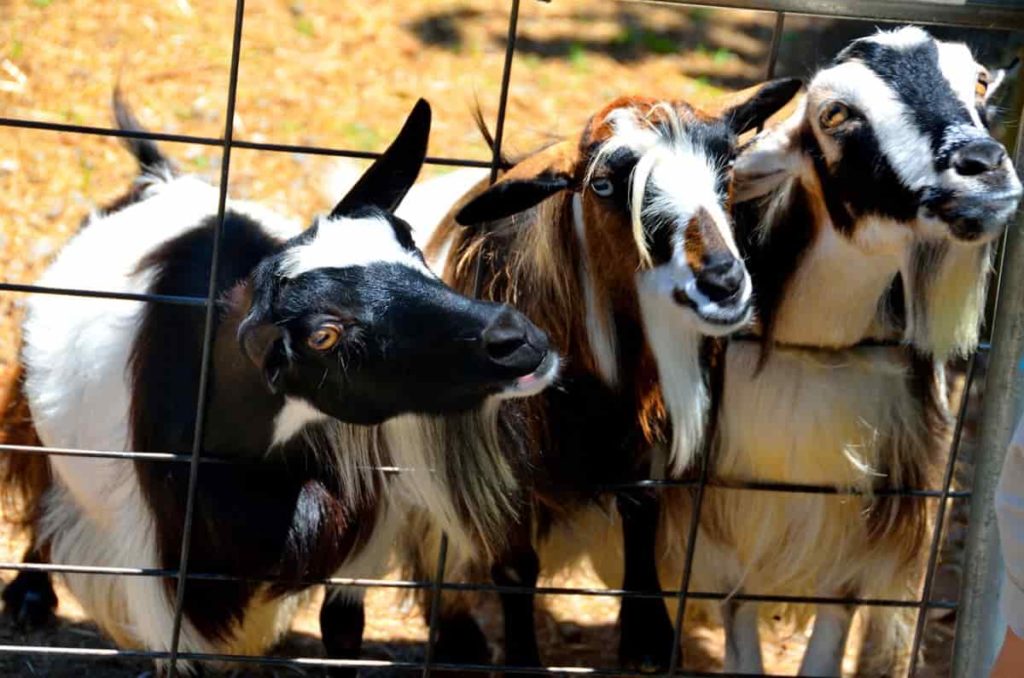
Major problems in goat farming
There are several major diseases affecting goats in New Zealand, such as Johnes Disease and Caprine Arthritis Encephalitis (CAE). If the goat shows symptoms of these diseases, it can be very painful for the owner, especially since they may not appear for some time, but the general health and well-being of the goat, its breeding and affects the ability to produce milk. When you are buying a goat, it is important to get a guarantee from the seller that the goat is free from disease.
If you can, you should get it checked by a doctor before you buy. A blood test can tell if a goat is immune. Goats in New Zealand face many welfare problems. Goats kept for milk production are repeatedly impregnated so that humans can use their milk, only to have their young snatched from them, picked up for the same fate, or killed. Goats are kept for their milk, meat, or fiber from their coats, which are usually locked in deep indoor warehouses where they are not able to graze or roam freely outside.
Goats can also be seen at the end of small tethers on the side of the road around Aotearoa. Considered nothing more than a lawnmower, these goats often live alone, exposed to the elements, sometimes without adequate water or food supply all to maintain the grass and grass around them.
In case you miss this: Dairy Goat Breeds, List, Milk Production, Breeding
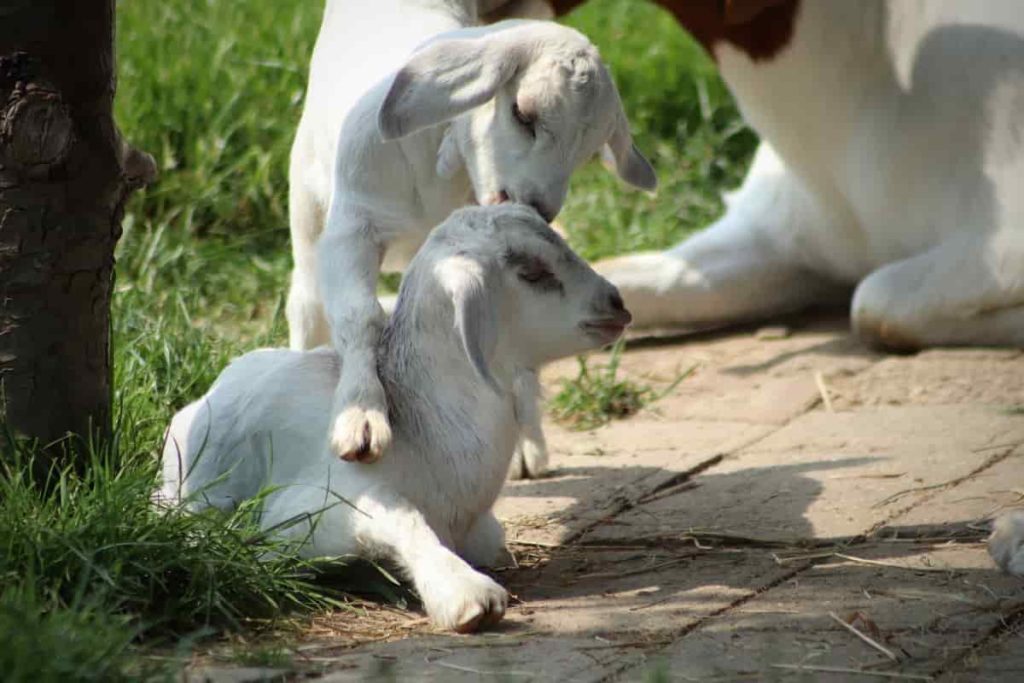
Frequently asked questions about goat farming in New Zealand (FAQ)
How much land need for a dairy goat?
Depending on the pasture, usually, 4-6 goats per acre is recommended. You can keep them indoors and get all the food for the – grass, fodder, hay, silage, meal, etc. They also need good clean water.
Is goat native to New Zealand?
Goat breeds were introduced to New Zealand in the 1770s. They were first released to the food source and clean weeds, and later to provide fiber for commercial industries.
How many goat farms are there in New Zealand?
There are currently 66,100 dairy goats from 92 farms in New Zealand.
- Economical Aquaculture: A Guide to Low-Budget Fish Farming
- 15 Common Planting Errors That Can Doom Your Fruit Trees
- How to Make Houseplants Bushy: Effective Tips and Ideas
- Innovative Strategies for Boosting Coconut Pollination and Yield
- Pollination Strategies for Maximum Pumpkin Yield
- The Complete Guide to Chicken Fattening: Strategies for Maximum Growth
- Natural Solutions for Tulip Problems: 100% Effective Remedies for Leaf and Bulb-Related Issues
- Revolutionizing Citrus Preservation: Towards a Healthier, Greener Future
- Natural Solutions for Peony Leaf and Flower Problems: 100% Effective Remedies
- Maximizing Profits with Avocado Contract Farming in India: A Comprehensive Guide
- Natural Solutions for Hydrangea Problems: 100% Effective Remedies for Leaf and Flowers
- The Ultimate Guide to Choosing the Perfect Foliage Friend: Bringing Life Indoors
- From Sunlight to Sustainability: 15 Ways to Use Solar Technology in Agriculture
- The Ultimate Guide to Dong Tao Chicken: Exploring from History to Raising
- The Eco-Friendly Makeover: How to Convert Your Unused Swimming Pool into a Fish Pond
- Mastering the Art of Delaware Chicken Farming: Essentials for Healthy Backyard Flocks
- 20 Best Homemade Fertilizers for Money Plant: DIY Recipes and Application Methods
- How to Craft a Comprehensive Free-Range Chicken Farming Business Plan
- Brighten Your Flock: Raising Easter Egger Chickens for Beauty and Bounty
- How to Optimize Your Poultry Egg Farm Business Plan with These Strategies
- Subsidy for Spirulina Cultivation: How Indian Government Schemes Encouraging Spirulina Farmers
- Ultimate Guide to Raising Dominique Chickens: Breeding, Feeding, Egg-Production, and Care
- Mastering the Art of Raising Jersey Giant Chickens: Care, Feeding, and More
- Ultimate Guide to Raising Legbar Chickens: Breeding, Farming Practices, Diet, Egg-Production
- How to Raise Welsummer Chickens: A Comprehensive Guide for Beginners
- How to Protect Indoor Plants in Winter: A Comprehensive Guide
- Ultimate Guide to Grow Bag Gardening: Tips, Tricks, and Planting Ideas for Urban Gardeners
- Guide to Lotus Cultivation: How to Propagate, Plant, Grow, Care, Cost, and Profit
- Agriculture Drone Subsidy Scheme: Government Kisan Subsidy, License, and How to Apply Online
- Ultimate Guide to Raising Araucana Chickens: Breed Profile, Farming Economics, Diet, and Care
- Bringing Hydroponics to Classroom: Importance, Benefits of Learning for School Students
- Ultimate Guide to Raising Polish Chickens: Breed Profile, Farming Economics, Diet, and Care
- Ultimate Guide to Raising Australorp Chickens: Profile, Farming Economics, Egg Production, Diet, and Care
- Silkie Chicken Farming: Raising Practices, Varieties, Egg Production, Diet, and Care
- Sussex Chicken Farming: Raising Practices, Varieties, Egg Production, Diet and Care
- Homemade Feed Formulations for Livestock: Discover Cost-effective Starter to Finisher Feed Recipes
The author of this post has undoubtedly done a great job by shaping this article on such an uncommon yet untouched topic. There are not many posts to be seen on this topic and hence whenever I came across this one, I didn’t think twice before reading it. The language of this post is extremely clear and easy to understand and this is possibly the USP of this post.